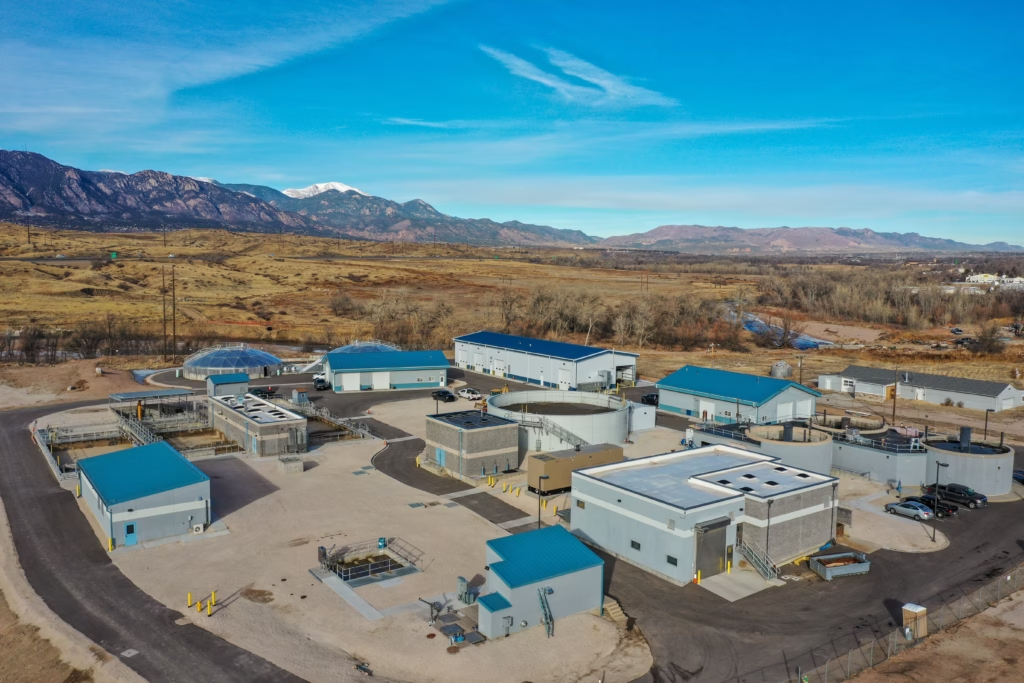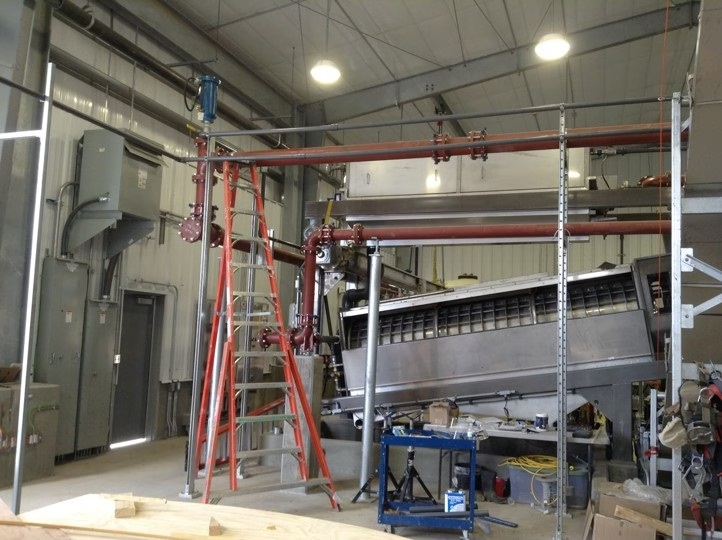Keep Funds Flowing: How SRFs overhauled an outdated wastewater system in Colorado
July 23, 2025

AWWA Articles
Keep Funds Flowing: How SRFs overhauled an outdated wastewater system in Colorado
When the Security Sanitation District southwest of Colorado Springs set out to renovate its wastewater treatment plant, it had been 30 years since the last update.
While the district hadn’t violated federal regulations for effluent quality, “we were bumping up against those numbers all of the time,” said Roy Heald, general manager of the district. “These upgrades were badly needed. We basically went through the entire plant and upgraded every component or system while the facility was still functioning.”

The project took seven years and $38 million — a hefty price tag for a district with an operating budget of less than $3 million. To pay for the project, the district was able to secure two loans — of $15 million each — through the Water Pollution Control Revolving Fund (WPCRF), a federal program that provides funding for low-cost loans to water districts for infrastructure improvements.
For Security Sanitation District, the interest rate was one of the lowest they’d seen in the state for this type of funding — below 2%. “It was a smoking deal,” Heald said, “especially for that much money. That’s the biggest benefit.”
Without the low interest rate, securing these loans would have been impossible, he said. The district initially sought $15 million at the start of the project, but as design progressed, they realized they’d need more than double that amount.
The comprehensive overhaul touched every component of the plant, including upgraded headworks with new screening, installation of a new integrated fixed film activated sludge (IFAS) system (which is a different treatment process than they used before), new sludge handling and dewatering systems, and replacement of the ultraviolet disinfection system. These improvements were made while the facility remained operational — a logistical challenge that added layers of complexity for the team.
The results are transformational. “The plant has been operating flawlessly as far as effluent quality,” Heald said. The upgrades have enabled the facility to meet stringent discharge permit requirements for nutrients and metals like ammonia, nitrogen, copper, zinc, and cyanide. “It’s better for the environment, and we’re a long way from violating our permit numbers,” he added.
Heald and others have been trying to convince U.S. Congress of the importance of revolving funds like these, as policymakers consider cuts to these programs.
“It’s a travesty,” he said, “because this program is set up well and it works well.”

Heald is a former board member of the Colorado Water Resources and Power Development Authority, which distributes this type of financing on behalf of the U.S. Environmental Protection Agency. A revolving fund means that the authority uses the initial federal investment to offer loans at low-interest rates; as utilities pay back their loans and interest, the fund grows.
It is estimated that for every federal $1 invested through an SRF, the authority can allocate $2 — effectively doubling the investment in water systems.
While the upgrades at the Security Sanitation District are a testament to the power and necessity of SRF funding, Heald says the program is a lifeline for smaller systems across the country. “Smaller systems don’t have the luxury of choosing between funding options — they’re kind of stuck,” he said. And that means that either costs are borne by residents or perhaps worse, that improvements don’t happen at all.
For Heald and many others, the SRF program is more than a funding mechanism — it’s a lifeline for communities striving to provide safe, reliable water and sanitation services. “Keep hammering on how important the program is for small entities,” he urged AWWA and its members. “It’s money well spent.”
If your utility has benefited from federal infrastructure funding and you would like to help AWWA tell the story about the importance of these programs, please complete our quick survey. Your responses will help us share real-world case studies to congressional offices and other stakeholders as they evaluate the need for additional infrastructure funds.
Advertisement